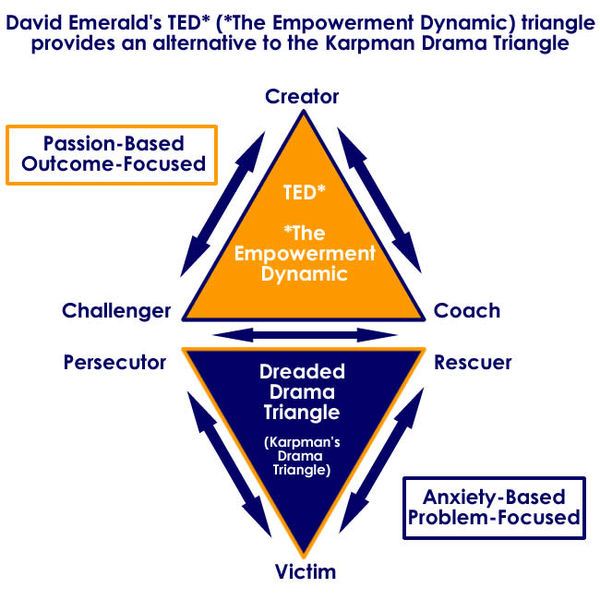

A woman (the Rescuer) stops and gives him £20 for this purpose. Rory provides an example observed in real life, of a beggar (the Victim) asking passers-by for money to enable him to buy a train ticket back to his hometown.

The three roles can be quite fluid, with people moving between them.Īlthough it is often not taught on person-centred courses, the Drama Triangle is a useful model to apply both to everyday life and to counselling. The Persecutor is happy to blame the Victim, while the Rescuer experiences guilt if they do not help the Victim (who thus remains helpless). The Victim, who feels helpless, looks for a Persecutor to add to their feeling of oppression, and a Rescuer to save them. The three corners of the triangle represent roles – Victim, Rescuer and Persecutor. The Drama Triangle explains how we sometimes take on unhelpful roles subconsciously. The concept was first described in a 1968 journal article. He was a student of Eric Berne, who founded Transactional Analysis.

This is a social model of communication, developed by American psychiatrist Dr Stephen Karpman.
If you keep struggling with a particular type of material, consider personal therapy to explore the reasons for this in greater depth. If your self-awareness leads you to realise that parallel process or transference is occurring, discuss this with your clinical supervisor. Be aware too of the possibility of countertransference, where the client reminds you of someone from your past. Watch for parallel process – when the material a client brings parallels something you are struggling with yourself. However, always remember that the heavy material is not your own. It is fine to get a tear in your eye and to have to reach for a tissue yourself. How do we do this if the feelings become overwhelming for us? Ken and Rory offer the following tips: Empathy is very important for counsellors, so it is good to feel these emotions (and to complete the empathy circle by communicating that empathy), but it is important to maintain the ability to manage the session as the counsellor. Our clients may well bring heavy material when they come to us for counselling, and it is natural for us – in standing with them in this – to experience intense emotions too. Online and Telephone Counselling Course. Counselling Theory in Practice – Textbook. Importance of Modality and Medium in Choosing a Supervisor.







 0 kommentar(er)
0 kommentar(er)
